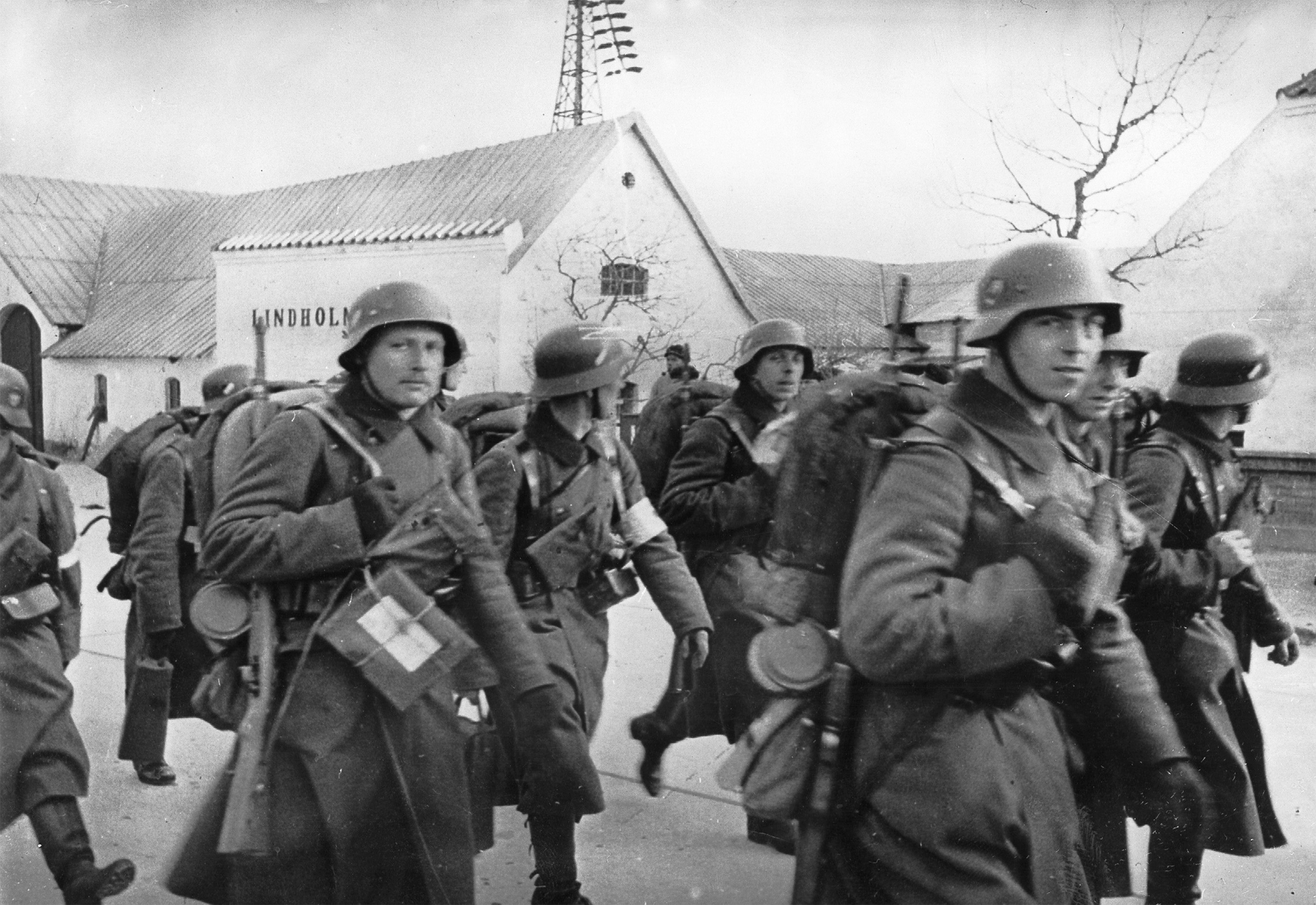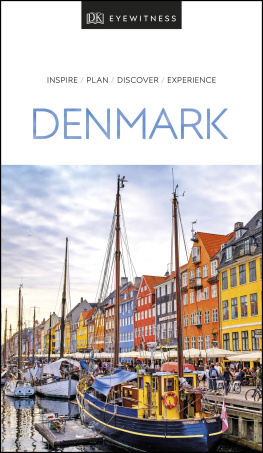This is an extraordinary time were living in, and it has brought forth many extraordinary people. Never has the world been exposed to such suffering, but never has the feeling of life been as strong or as intense as now.


(Preceding image) German soldiers during the invasion of Denmark.
Imagine waking up one morning to find foreign soldiers standing on the street corners of your town. Overnight, an enemy army has arrived and now occupies your entire country. This is what happened on April 9, 1940, when Germany invaded Denmark in World War II.
Imagine being pulled out of school one morning and told that you and your family are in mortal danger and must go into hiding and leave the country immediately. This is what happened on September 29, 1943, when warnings spread through the Jewish community in Denmark that they were about to be captured and deported to a concentration camp.
Courage & Defiance tells the stories of real people who experienced these events. This book doesnt capture everything that happened in Denmark during World War II, or attempt to cover the entire history of the war. I hope to help illuminate this time through the stories of a few people who were faced with life-changing decisions when war arrived on their doorsteps.
Courage & Defiance is an introduction to a multifaceted, complex story, and there are many aspects I have not addressed. These include in-depth explorations of the political situation, the underground press, and collaborators and Nazi sympathizers. I have only touched on the important role that the Danish Communist Party and its affiliated sabotage group, BOPA, played throughout the occupation, especially in helping to build an organized movement and inciting resistance and sabotage. I hope readers whose curiosity is sparked by this time period will seek out other books and resources, and I have included suggestions in the Bibliography and Other Resources section.
The German occupation of Denmark lasted five years, from April 1940 until May 1945. This book is organized in a chronological manner, but youll find that the threads of stories within it sometimes intertwine, intersect, disappear, and then reappear. After all, the past, like our own present, is a messy businessa crazy quilt rather than a straight line of names and events to be memorized.
Denmarks experiences during World War II are unique. The country was never officially at war with Germany. Danish resistance efforts came about not from government policies or programs, but from the actions of individuals who risked their lives to challenge the occupying force and their own governments policy of adapting to Germanys power.
But World War II was not just a military conflict. The Nazis carried out the worst atrocities in human history in the Holocaust, which saw the murder of six million Jewish men, women, and children from more than twenty countries, including Germany, the Soviet Union, Poland, Austria, Hungary, Romania, France, and the Netherlands. Believing that Germans were a superior race and that Jews represented a threat, the Nazis implemented a horrific plan, which they called the Final Solution, to systematically imprison innocent people in concentration camps, where they were tortured, starved, and murdered.
This did not happen in Denmark. Approximately 7,700 Jews lived in Denmark before the war; 7,220 were rescued, fewer than 475 were captured, and 53 died in concentration camps. Historians estimate that perhaps another 20 to 60 people died attempting to escape, for a total of 75 to 120 victims. In other words, unlike in many other countries, most of the Danish Jews survived, thanks to a spontaneous, grassroots rescue effort undertaken by ordinary people: college students, teachers, professors, mechanics, fishermen, police officers. Nor were those taken away forgotten by their fellow citizens: The Danes worked to send food and clothing to prisoners and negotiated their early release.
Noted historian Lani Yahil, who compiled a detailed account of the rescue efforts, writes that the Danish story has much to teach us, especially about how people and nations can remain true to their humanity and to their values, even under tremendous pressure. This remarkable rescue stands out as a praiseworthy and heroic eventand that is how it ought to be remembered for all time.
I was struck by something else Dr. Yahil said, which is reflected in the memoirs and stories I read of those who participated in the Danish resistance. Dr. Yahil notes that people who took part in the rescue didnt think of themselves as heroes, rather they merely did the natural and necessary, and never for a moment considered the possibility of abandoning the Jews to their fate.
It was clear to each and every one that this was the thing to do.

Danish is to many of us an unfamiliar language, so some of the names may be confusing. To help readers keep track, Ive used first names for those people whose lives we follow most closely, as well as a few others. Historical figures and others are usually identified by last name. I have also included a list of the major people mentioned in this book, at the end. Also, if you want to hear Danish, check out the About Danish section, which includes a description of the Danish alphabet and a link to hear it spoken online.
Also included in the back matter are a map of Denmark and a list of other books for further reading. While Ive indicated books that may be of special interest to young readers, many of the other resources mentioned make for fascinating reading. Dr. Nathaniel Hong, who kindly read and commented on the manuscript of this book, has written two books on the Danish resistance. He first became curious about it while living in Copenhagen at the age of twelve.
But a book can only go so far to make history come alive. You can also hear and see oral histories of Holocaust survivors and Jews who escaped Denmark (including Herbert Pundik, who appears in these pages) by visiting the website of the United States Holocaust Memorial Museum and by looking online at photos at the Museum of Danish Resistance.
I first became aware of the Danish resistance through Lois Lowrys Newbery-winning book Number the Stars , a fictional account of this time and the rescue of the Jews, a novel that my children and I all loved. After completing my book, I went back again to read Number the Stars and in the afterword recognized the name of Kim Malthe-Bruun, who inspired Lois Lowry. Quite separately, his words had touched me as I was researching, and youll find excerpts of his letters in these pages.
In October 2014, a few weeks before his ninety-fifth birthday, I had the honor to meet Niels Skov, whose story is told in this book, and his wife, Diane, at their home in Washington State. Although he was gravely ill, Nielss indomitable, resolute spirit shone through, just as it must have done seventy-four years ago when he found the courage to defy the oppressors who had invaded his homeland. I hope his story, and those of other brave men and women who fought for freedom, justice, and equality, will inspire you as they have me.



















